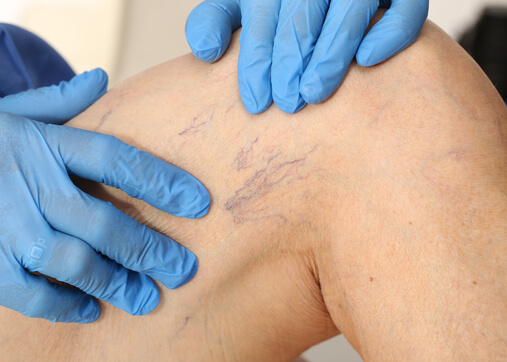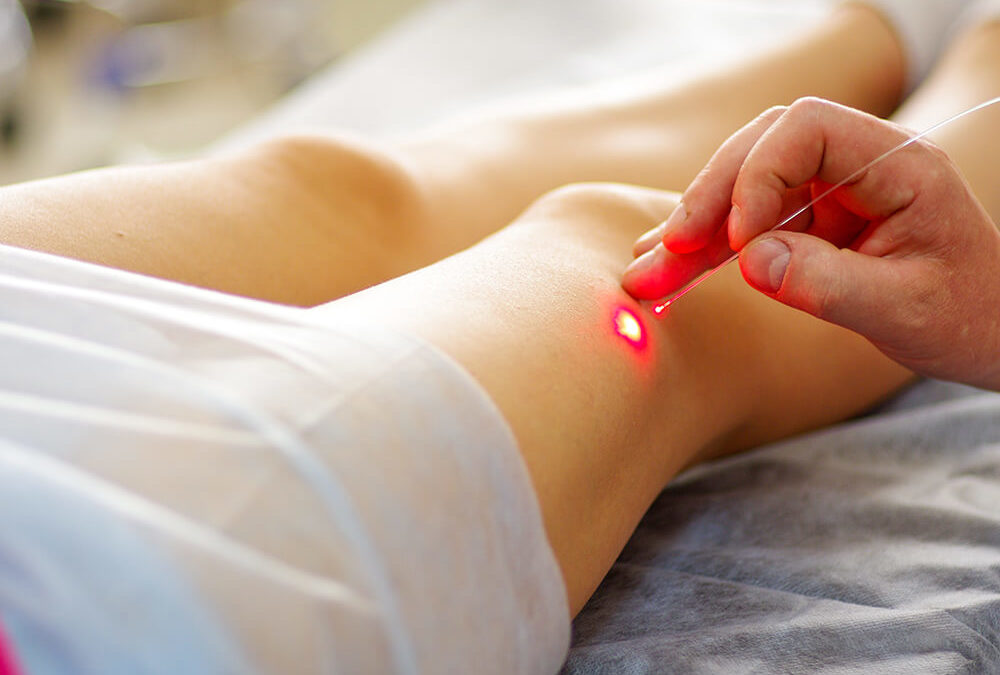We’ve all seen them. The purplish, blue veins that creep up the leg of an unfortunate soul. What you may not realize is it’s more common than you would think. In fact, over half of the population of women have an issue with their veins. Many women seek ways to rid themselves of these pesky veins, and it’s not just because of vanity. There are also health complications that can arise from some vein problems such as varicose veins. But we’re here to tell you that there’s hope.

What Causes Spider Veins?
First, before we get into treatment, let’s talk about why people get spider veins. Like a lot of your physical attributes, you can thank your mother. However, if your mom has spider veins, that doesn’t mean you’re doomed to get them too. There are other ways they can pop up too, including your lifestyle choices. For example, if you’re on a birth control that has hormones in it, there’s a higher chance that you could develop spider veins over time. In addition, smoking or obesity can also increase your chances.
Hormonal birth control can actually weaken the walls of veins and accelerate the formation of spider veins. Both smoking and obesity can hinder circulation and cause veins to swell. Swelling of the veins can lead to spider veins. Unfortunately, there isn’t much we can do to prevent spider veins if they’re hereditary. Although, not smoking and maintaining a healthy weight are better for you overall and can decrease the chance that they’ll form. Additionally, consider a low-hormone birth control if you are really worried about them. If you’re a couch potato, try to incorporate some workouts into your week. Exercise can help already formed spider veins and possibly prevent more, so get your blood pumping.

Spider Vein Treatment
Once formed, spider veins will not go away with at-home treatments. Sometimes, vein problems can be uncomfortable or even painful. Support stockings can help reduce the symptoms but won’t get rid of spider veins. On the bright side, professional treatment is better than it’s ever been. Plus, most insurance companies will even cover a portion of the cost. There are quite a few options when it comes to professional treatment:
-Sclerotherapy
The first option has been around since the 1930s. Basically, a saline solution gets injected directly into the affected vein. Over a time period of three to six weeks, the vein will slowly disappear. This route is pretty inexpensive and simple, plus it can be done in an outpatient setting.
-Endovenous laser treatment
Next, this treatment requires local anesthesia. A pretty small laser fiber is placed inside the vein. The laser light pulsates, causing the vein to collapse.
-Radiofrequency occlusion
Not unlike the previous treatment, radiofrequency causes the vein to collapse.
-Surgery
There’s always this tried and true option, which does require some form of anesthetic. Usually, surgery is reserved for larger vein problems like varicose veins.
Want to learn more?
Have questions?
Want to schedule a consultation?
Want to learn more?
Have questions?
Want to schedule a consultation?
Want to learn more?
Have questions?
Want to schedule a consultation?

